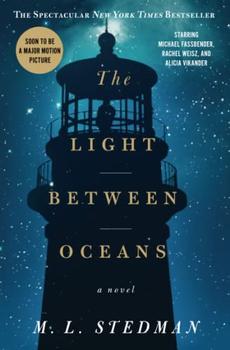Summary | Excerpt | Reading Guide | Reviews | Beyond the Book | Read-Alikes | Genres & Themes | Author Bio

A Novel
by Margot L. StedmanThis article relates to The Light Between Oceans
In Margot L. Stedman's The Light Between Oceans, Tom Sherbourne takes a job as a lighthouse keeper in Janus Rock, Australia, a place where "the supply boat comes once a season and shore leaves are granted every other year at best..." But what exactly do lighthouse keepers do? What purpose do they serve?
 Generally speaking, a lighthouse keeper is someone who maintains a lighthouse facility. This job was of course more relevant years ago during the 19th century when oil-fueled lanterns and clockwork-like gears were fundamental components of lighthouses, before computers and electric lights could be used for the job. (In 1912, Nils Gustaf Dalén won the Nobel Prize in Physics for his invention of "automatic valves designed to be used in combination with gas accumulators in lighthouses," which made humans much less necessary in the process.) Tasks included cutting wicks, refilling lamps, winding clockwork components, shining reflective lenses, and cleaning windows.
Generally speaking, a lighthouse keeper is someone who maintains a lighthouse facility. This job was of course more relevant years ago during the 19th century when oil-fueled lanterns and clockwork-like gears were fundamental components of lighthouses, before computers and electric lights could be used for the job. (In 1912, Nils Gustaf Dalén won the Nobel Prize in Physics for his invention of "automatic valves designed to be used in combination with gas accumulators in lighthouses," which made humans much less necessary in the process.) Tasks included cutting wicks, refilling lamps, winding clockwork components, shining reflective lenses, and cleaning windows.
While it sounds peaceful enough, being a lighthouse keeper could be very dangerous, and at the very least, lonely. According to the US National Park Service, "Lighthouse keepers and lightship crews often knew of colleagues who had lost their lives to ice, tsunamis, and colossal storms. Yet these men and women persevered. A few risked their own lives to save others in peril, rescuing mariners and shore-side visitors from thin ice, storms, shipwrecks and other disasters. Some keepers would perform these acts of heroism many times over."
 And the money wasn't great. The NPS reports that, "Keeper salaries were not high. Many keepers supplemented their incomes with other activities, acting as pilots or fisherman, often leaving their wives and children to tend the lamps." It was not uncommon for women to hold these important posts. "Fifth Auditor Stephen Pleasonton, administrator of the Lighthouse Establishment from 1820 to 1852, had no qualms about appointing female keepers to replace related male keepers who died in service. In 1851, he wrote, 'So necessary is it that the Lights should be in the hands of experienced keepers that I have, in order to effect that object as possible, recommended on the death of a keeper, that his widow, if steady and respectable should be app't to succeed him, and in this way some 30 odd widows have been appointed.'"
And the money wasn't great. The NPS reports that, "Keeper salaries were not high. Many keepers supplemented their incomes with other activities, acting as pilots or fisherman, often leaving their wives and children to tend the lamps." It was not uncommon for women to hold these important posts. "Fifth Auditor Stephen Pleasonton, administrator of the Lighthouse Establishment from 1820 to 1852, had no qualms about appointing female keepers to replace related male keepers who died in service. In 1851, he wrote, 'So necessary is it that the Lights should be in the hands of experienced keepers that I have, in order to effect that object as possible, recommended on the death of a keeper, that his widow, if steady and respectable should be app't to succeed him, and in this way some 30 odd widows have been appointed.'"
Today, most lighthouses are automatic and do not require live-in keepers, but maintenance is still needed. In the US, maintenance is the responsibility of the Coast Guard or the National Park Service. The last "officially manned lighthouse" in America, the Boston Light, was automated in 1998. Today, volunteers act as tour guides for the Boston Light, and
some lighthouses even offer overnight accommodations for people who yearn to experience the life of a keeper for a night.
Filed under Cultural Curiosities
![]() This "beyond the book article" relates to The Light Between Oceans. It originally ran in August 2012 and has been updated for the
April 2013 paperback edition.
Go to magazine.
This "beyond the book article" relates to The Light Between Oceans. It originally ran in August 2012 and has been updated for the
April 2013 paperback edition.
Go to magazine.
Most of us who turn to any subject we love remember some morning or evening hour when...
Click Here to find out who said this, as well as discovering other famous literary quotes!
Your guide toexceptional books
BookBrowse seeks out and recommends the best in contemporary fiction and nonfiction—books that not only engage and entertain but also deepen our understanding of ourselves and the world around us.